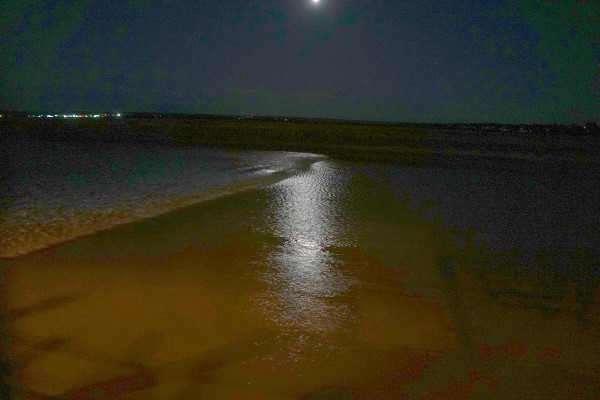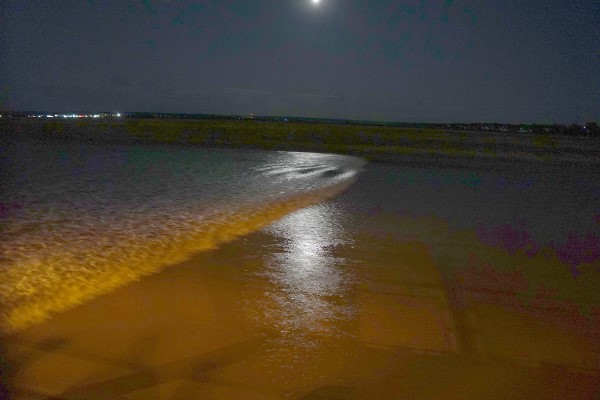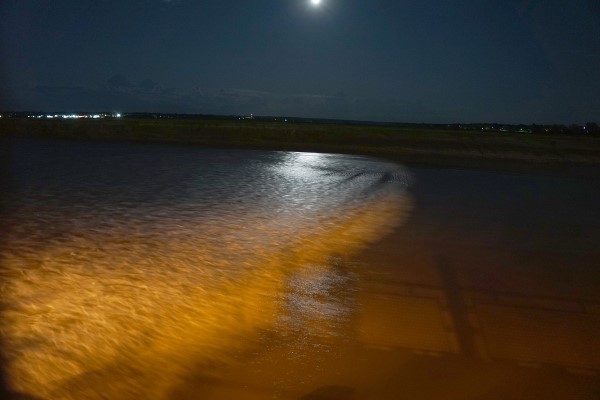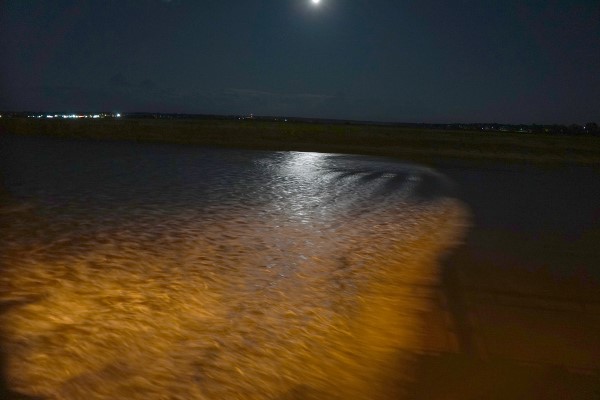Tidal bore by moonlight

À propos of nothing, I was in New Brunswick and Nova Scotia last week, touring the Bay of Fundy. The tides in the Bay of Fundy can reach several meters and cause rivers to essentially back up. The incoming tide reverses the direction of flow, and you can see a wave or waves propagating upstream. The wave is known as a tidal bore, from an Old Norse word.
Though there is a tidal bore every 12 or so hours, my schedule allowed me to see only one, at approximately 12:30 in the morning. We walked down to the Petitcodiac River in darkness, but the moon turned out to be very cooperative: low in the sky and directly across the river. Though I had only a monopod and no remote, I managed to stabilize my camera on a fence post and got the following pictures.




The bore was fairly noisy when it went by, and indeed it was somewhat turbulent, as you can see from the photographs. The rusty color of the water results from iron compounds in suspended silt. We are guessing that the bore was perhaps a half-meter high. Judging by the exposure times, I estimate that the time between the first and last photographs is 4-6 s. I do not know the distance traversed. I also noticed, in the photographs, what appears to be a standing wave in the frame of reference of the bore.
The tidal bore is not a soliton wave, but is an example of a hydraulic jump.
